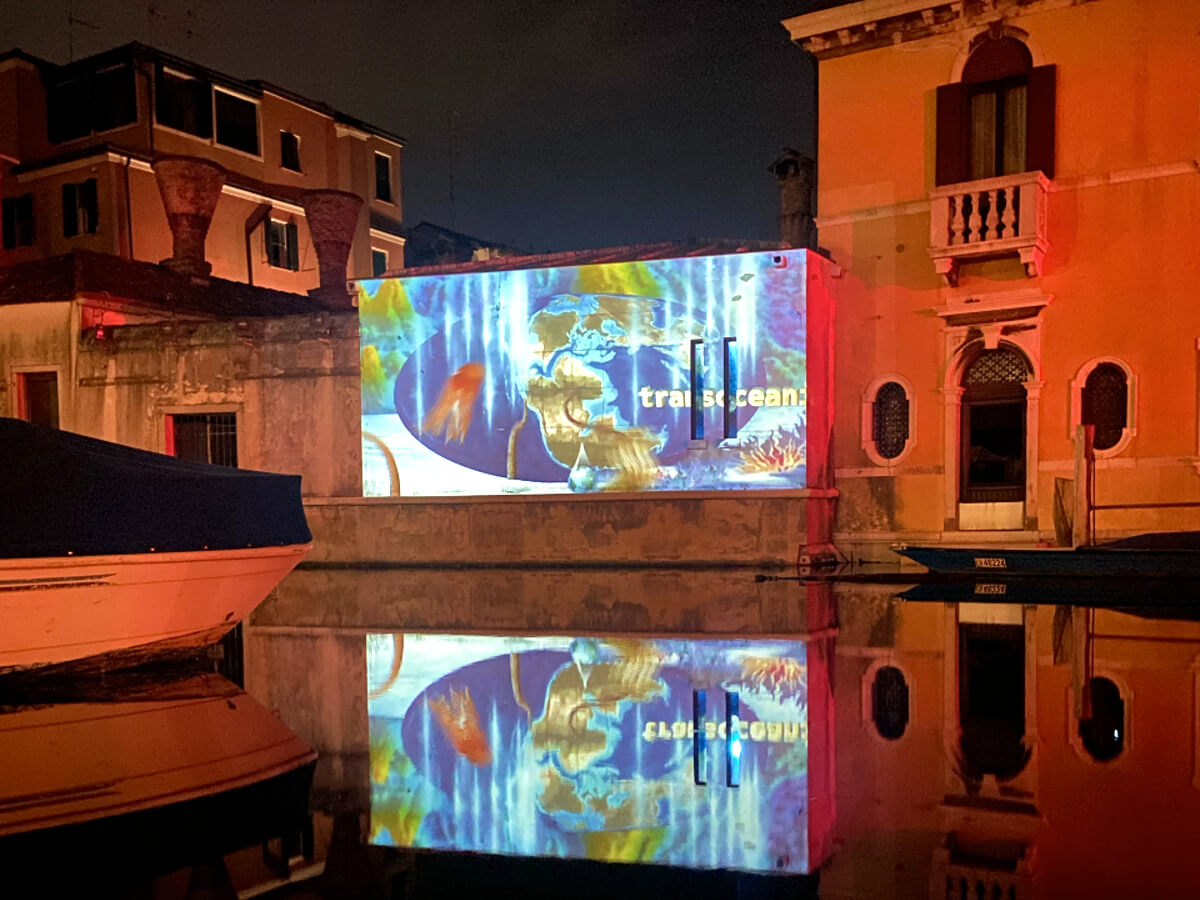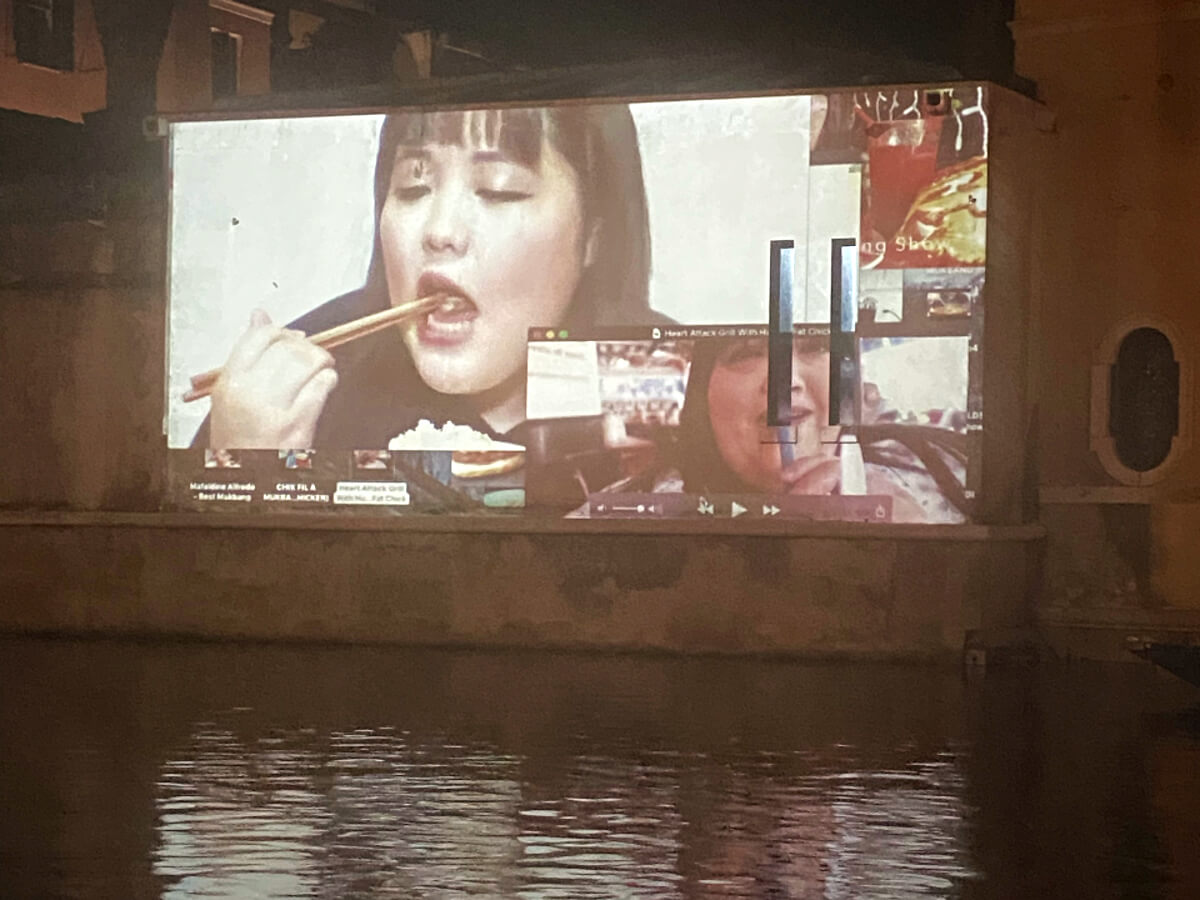Bogiaisso: A Video Art Festival Engaging Chioggia and its Fishers
Niccolò Moronato
We interviewed artist Niccolò Moronato about the origins and future of the festival, which this year will be held over three evenings: August 26, 27, and 28, 2024.
Niccolò Moronato is an artist, language designer and the initiator of Bogiaisso, an independent videoart festival for fishers and their communities in the island of Chioggia. Their work is influenced by training in languages, economics, and advertising, and spans various mediums, including cartography, collage, drawing, and relational interventions. Moronato’s interventions are always designed for individuals and communities outside traditional art spaces, aiming to inspire curiosity and critical thinking about societal norms.
Chioggia is a coastal town in the Veneto region of northern Italy. It is located on a small island at the southern end of the Venetian Lagoon, about 25 kilometers (15 miles) south of Venice.
TS What is the meaning of the word “Bogiaisso”?
NM Literally, it means the place “where the water bubbles”: a confluence of currents, a vortex. For Chioggia’s community, it is also a specific spot outside the nearby Pellestrina dam that all mariners try to avoid because of its dangerousness.
For us “Bogiaisso” embodies a year-long community practice that gives fishers the opportunity to see themselves from a new angle, and imagine new ways to take care of themselves and the environment they depend on. It’s a participatory poetic exercise to explore the subtle bond that unites people who live on islands at all latitudes, in deep interdependency with water bodies.

TS As an artist with a deep connection to Chioggia and experience living in various cities around the world, what inspired you to create the Bogiaisso video art festival on this island? What is your relationship with Chioggia?
NM I’ve always been fascinated by the rhythms, habits, and strong personalities mariners have here. My family’s house looks directly into the fishing ships docked on the canal, so I’ve been admiring their instruments and details since I was a kid. When you travel long and far, especially when you immigrate to another country, you often find yourself looking for spaces, times, and situations that trigger feelings close to the places that made you. Sometimes, even inadvertently. Places, when you go far away from them for a long time, don’t really disappear – they become personality traits, relations, values, instincts that serve you as a map of what you don’t know yet. What happened to me was that I moved my Italian base from Milan to Chioggia in late 2021 and I had no idea of what would happen; except the unimaginable: being invited to join the crew of a fishing ship that usually docks across my balcony for days-long trips, recording sounds and videos but above all becoming friends and spending endless hours chatting. Soon I realized in a surprising way how my thoughts, my practice, even my works in previous years, which I had made in different countries and cities, actually exuded a certain tone, a kind of human presence, which is so closely reflected in the way the ciosoti (Chioggia’s inhabitants) live. And at the same time, throughout my research journeys or residencies, I started to see how many concepts used elsewhere as pure abstractions (e.g. human society described as an ecosystem, local communities operating as an archipelago…) in Chioggia – just as in many places where situated habits and wisdom resist cultural or linguistic domination – are raw, lived realities worth acknowledging, experiencing, and building upon with critical imagination.
For example, Chioggia has a unique way of intending, protecting, sharing, and sometimes even abusing – in urbanite terms – public space. The fishing community exists because public space is constantly filled and voided, taken and given, tolerated and reclaimed by each single individual multiple times a day, in a constant movement sometimes harmonious, sometimes belligerent — like the waters of a Bogiaisso.
These observations made me wonder if more aspects of this community could inspire a collective reflection on the contemporary, and how this could be the perfect place from which to imagine a new type of future. One where, for example, freedom is a constant, direct renegotiation between people that depend on each other, but aren’t nominally tied to one another.
It was only after a year since I moved to Chioggia and started Bogiaisso with Alice Jasmine Crippa with these thoughts in our mind, that I ran into a text by Edouard Glissant that encouraged me to go on. It said: “we can start from a tiny corner of the world, a real place. We can start from this real little place located in an archipelago, (…) and from there live the life of the world in a global sense”.
I’ve always thought I was an anarchist, but maybe I am just a ciosoto.

TS How has the Bogiaisso festival evolved over the past years, and what do you envision for its future?
NM So far, ever more precious works of art have arrived in town, engaging with the feelings and experiences of the local community, generating new meanings and perspectives. Year after year, we couldn’t be more grateful for the warm response from the art community and the quality of the pieces we are welcome to screen.
All of this is made possible through the support of a scientific committee composed of curators who suggest artists and videos throughout the whole year, and associations who support and host us in new exciting locations, motivated by their shared interest in fostering the connection between contemporary art and the lagoon.
We started in 2022 with a debate and a small, unmediated, selection of videos. While that core has pretty much remained, I think there have been a few significant evolutions last year and this year will follow suit. One evolution has definitely been about contextualizing and introducing works in ways that break down classic artspeak and rely on evoking sensory experiences from life on the island in order to bring the audience closer to the feelings or concepts expressed by the works we show. It might seem like a simplification, but it requires you to really live here and translate from one world to another in ways that don’t trivialize the work nor make the audience feel they need a lot of “studies” to appreciate the show. There’s not much space for romanticizing or pretending, and even the most sophisticated thoughts must be expressed in relatable terms that leave room for questions and comments, and I just love that.
Another evolution has been about involving fishers directly in the program with a special hyperreal installation on board the fishing ship I mentioned before, under project SONAI, a cross-mediterranean Chioggia-Marseille collaboration with fellow artist Hugo Mir-Valette. It was magical. The intervention was deep, but managed to focus on highlighting the innate poetry of the ship, while leaving space for visitors to engage in free conversation with the captain on board, surrounded by his instruments and his world. This year we are involving different generations of ciosoti in an experiment: a polyphonic performance in ciosoto (Chioggia’s dialect) on the main canal, inspired by the text of Miriam Simun’s video on octopuses, which we will project right afterward.
Next winter, if we manage to have enough of a selection already, our idea is to have spontaneous get-togethers at the local café and collect impressions about the films from the fishers, to then feature the “selected” works in the next Bogiaisso.
We are also introducing new opportunities for our guests to contribute to our future.
The hope is to quickly reach the point where we can invite exceptional international artists to Chioggia, sponsor their stay as they take time to respond to this reality, and share their perspectives firsthand during the festival.
Bogiaisso is a challenging project since it’s entirely community-run, independent, and self-funded, but it’s a piece of a much larger project that aims to bring together the knowledge of the social and productive local environment and the perspective of artists, enriching each other’s views, and developing new models to learn and pass on expertise through experimental artistic interventions all over the island and throughout the winter months, when the tourists are few and Chioggia is on its own again.
BOGIAISSO
26-28 August 2024
Chioggia (Venice, Italy)
Palazzo Grassi – Canal Vena – Riva San Domenico
Free entrance – 8.30 pm – Wine for all
For more information and detailed programme, please contact:
Email: bogiaisso@gmail.com
Instagram: @bogiaisso
Image Credits:
1. Courtesy of Bogiaisso and Caroline Deodat
2. Courtesy of Bogiaisso and Tabita Rezaire
3. Courtesy of Bogiaisso and Giulia Crivellaro


